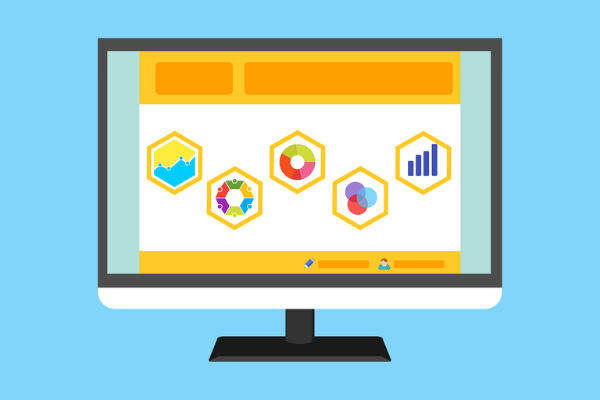Insights
INSIGHTS
All Topics
How to use data to target donors
24 Apr 2020by Paul Rubens
We examine how charities can build a simple data strategy to help drive donations
When heavy storms are forecast in the American Midwest, stores like Walmart stock up on strawberry Pop-Tarts. Why? Because analysis of sales data shows, rather surprisingly, that in the past locals filled their shopping carts with Pop-Tarts just before bad weather hit. And because in retailing past behaviour is often a good guide to future behaviour, stocking up in advance allows Walmart to maximise its pre-storm Pop-Tart sales.
If you are a charity fundraiser, then this is relevant to you at a very basic level, and here’s why. Data analysis that’s been carried out in the past reveals that in any group of potential donors, the people most likely to make a donation to your charity in the future are the people who have already donated to your cause at least once. In charity giving, as in retailing, past performance is a good guide to future behaviour.
That means that a database containing a list of previous donors is a useful starting point for targeting potential future donors. But if this database is filled out with previous donors’ "RFM" data then it can be used to pursue a far more sophisticated digital fundraising strategy. RFM stands for Recency Frequency Monetary, and this refers to the recency of an individual’s last donation, the frequency that they make donations, and the amount of money they typically donate.
Armed with RFM data, not only are you in a position to ask previous donors for further donations, but you can work out when best to ask them, how often to ask them, and how much to ask them, in order to maximise your digital fundraising. It may not be obvious at first glance, but the answers to these questions are all in the data.
Getting started with data using CRM
This begs an important question: how do you extract these types of answers from your data? The simplest way for a charity to begin with a digital fundraising strategy is to use a constituent relationship management (CRM) system such as Salesforce for Nonprofits. This data optimisation software manages and records contacts with potential charity supporters and serves as a centralised database for RFM data as well as many other types of data that you collect.
Importantly, a CRM system will also allow you to analyse your data to surface insights about your potential supporters and answer questions such as those raised above.
For example, going back to the question of when best to ask past donors for another donation, you can use your CRM system to dive into your data and see what interval between asking for donations was the most successful in the past. Typically the answer is around four to seven months, but for your charity supporters, the answer may be very different. But whatever it is, the answer will be found in the data.
All good CRM systems should include the following features:
- Segmentation
- Data analysis and reporting
- Supporter engagement measurement
- Email communication
Popular CRM systems include
Segmenting your database
One of the key functions of a CRM system is its ability to segment your database of donors and potential donors. Segmenting means identifying a particular group based on one or more types of data.
For example, if you decide to embark on an initiative to convert first-time donors into repeat donors then you can segment your database using donation frequency data to identify all the people in your database that have made a donation once and once only. This group can then be contacted with a message designed specifically to persuade them to become repeat donors – perhaps by suggesting that they set up a direct debit payment to your charity.
Another way to segment your database is by donation amount. You could decide to identify repeat donors who make donations of less than £25 and then contact them with a message which seeks to move them up the donation ladder to a £25 donation. Then you could identify £25-£40 donors and look to move them up the donation ladder to become £50 donors, and so on.
Yet another way you can use segmentation is by donation frequency. For example, you could identify all donors who give regularly once per year and encourage them to increase that to twice or three times per year.
Combine analysis with segmentation
The key to choosing how to segment your database is sometimes in the data analysis. For example, if you decide you want to increase the number of large donations over £1000, you could use your CRM system to analyse existing £1000 donors. This could reveal that they are typically over 50, donate only once a year, and only like to be contacted by mail.
The next step might be to segment your database to identify all the over 50s who donate once per year and who donate between £500 and £1000, and target them with a letter asking for a £1000 donation.
What data should you collect and how do you collect it?
Most of the data segmentation exercises above rely on RFM data, but there are many other types of data that are also useful for charity fundraisers. When it comes to data optimisation, the more types of data you have about potential donors the more unexpected insights you can draw from it. But in practice, you are constrained in how much data you can gather because there is a limit to how much people are willing to reveal about themselves.
Good places to collect data include:
- On a donation form When donors give they expect to provide basic information such as their name, address, email address and phone number. But you can also add a small number of extra questions which they are unlikely to object to. A good practice is to keep the questions simple so that they can tick "yes" or "no" rather than having to write long answers – which is impractical if they are using a mobile device
Data that could be collected here includes age, preferred future communication method and frequency, and whether the donor would be interested in making regular donations.
- On a post-donation web page After making an online donation, a "thank you" page is a good place to ask donors a few more questions - such as whether they would be interested in hearing about specific projects or whether they would like to volunteer or to help with future fundraising efforts.
- Shortly after a donation The period when a donor’s contact with your charity is still fresh in their mind is a good time to follow up with a short survey which can be used to collect more valuable data. The survey can be posted, emailed, or sent out by text message, depending on their previously expressed contact preferences. It can ask for specific information such as age or income bracket, or more general information such as the reason for their interest in your charity, other charities they support, or any other information that you think could be useful for future data segmentation exercises.
A survey also provides a good opportunity to ask for feedback about your charity with questions such as "Would you like to hear from us more frequently or less frequently."
More on this topic
Recommended Products
Our Events
Charity Digital Academy
Our courses aim, in just three hours, to enhance soft skills and hard skills, boost your knowledge of finance and artificial intelligence, and supercharge your digital capabilities. Check out some of the incredible options by clicking here.


















